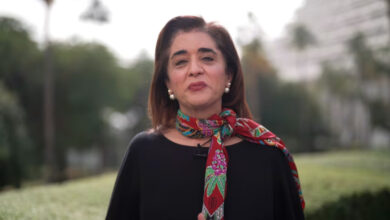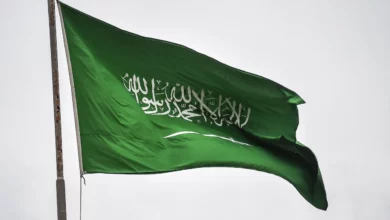
DUBAI, United Arab Emirates (AP) — The Saudi Arabia of today is far different from the Saudi Arabia of Sept. 11, 2001.
All but four of the 19 hijackers on 9/11 were Saudi citizens, and the Saudi kingdom was the birthplace of Osama bin Laden, the head of al-Qaeda and mastermind of the attack 20 years ago. In the two decades since then, Saudi Arabia has confronted al-Qaeda on its own soil, revamped its textbooks, worked to curb terror financing and partnered with the United States to counter terrorism.
It wasn’t until the last five years, though, that the kingdom began backing away from the religious ideology upon which it was founded and which it espoused within and outside its borders — Wahhabism, a strict interpretation of Islam that helped spawn generations of mujahedeen.
For countless numbers of people in the United States, Saudi Arabia will forever be associated with 9/11, the collapse of the World Trade Towers and the deaths of nearly 3,000 people.
To this day, victims’ families are trying to hold the Saudi government accountable in New York and have pushed President Joe Biden to declassify certain documents related to the attacks, despite Saudi government insistence that any allegation of complicity is “categorically false.” Victims of a 2019 shooting at a Florida military base and their families are also suing Saudi Arabia for monetary damages, claiming the kingdom knew the Saudi Air Force officer had been radicalized and could have prevented the killings.
Saudi Arabia’s close partnership with the United States, including the presence of American troops in the kingdom after the first Gulf War, made its leadership a target of extremist groups.
“It is important to realize that the terrorists who struck the US on September 11 have also targeted Saudi Arabia’s people, leadership, military personnel and even our holiest religious sites in Mecca and Medina on multiple occasions,” Fahad Nazer, the Saudi Embassy spokesperson in Washington, told The Associated Press. He said Saudi-U.S. counterterrorism work has saved thousands of lives.
Yet even as Saudi Arabia battled al-Qaeda and later attacks by the IS group, the Al Saud rulers continued to give ultraconservative clerics monopoly over preaching and influence over society in exchange for their staunch backing of the monarchy.
That decades-old pact unraveled before a roomful of foreign investors in 2017 when Saudi Crown Prince Mohammed bin Salman declared a return to “moderate Islam”. A year earlier, with backing from his father the king, the prince had clipped the powers of the country’s religious police — the ones who would chase young Saudi men and women out of parks for mingling, go after cars playing music and force stores to close during the five daily prayers.
“It’s a new country. It is a country in the making,” says Raghida Dergham, founder of the Beirut Institute think tank and a longtime columnist in Saudi papers. What has happened over the past 20 years in Saudi Arabia, Dergham says, has amounted to “a major cleanup of extremism … and it has not been easy.”
The crown prince doubled down in April of this year in remarks to Saudi TV. He said Saudi identity is built on its Islamic and Arab heritage. His words appeared to equate the two, and pointed to the broader effort the state has embarked on to affirm a national Saudi identity that is no longer tied to pan-Islamic causes nor the religious ideologies of Sheikh Mohammed Ibn Abdul-Wahhab, whose ultraconservative teachings of Islam in the 18th century are widely referred to by his name.
“If Sheikh Mohammed Abdel-Wahhab came out of his grave and found us adhering to his text and closing our eyes to independent reasoning (ijtihad) or deifying him, he would be the first to oppose such a thing,” Prince Mohammed said.
Ali Shihabi, who has ties to the royal court, says the kingdom’s new tone signals to “any fence-sitting clerics” that moderation is the only path to take going forward.
Moderation, though, goes only so far. As Saudi Arabia works to alter perceptions and control the narrative of its past for new generations of Saudis two decades after 9/11, it remains politically repressive.
Prince Mohammed’s rapid changes are part of a hurried effort that have coincided with him amassing power by sidelining rivals, like the country’s former counterterrorism czar, and clamping down hard on critics, including the killing of Saudi writer Jamal Khashoggi in Turkey by agents who worked for the prince.
Bruce Riedel, a Brookings Institution scholar who served at the CIA for 30 years, says the US-Saudi relationship has gone through fundamental changes over the years, but that even in the best of times “it’s a tough sell to portray Saudi Arabia as America’s best friend.”
While Saudi Arabia remains far from an open society, the cloud of social restrictions that loomed over generations in the kingdom is dissipating. No longer are eye-popping concerts, movie theaters and women driving impossible or illegal.
“My own perspective is that there’s envy of the younger generation that get to have these opportunities,” says Hisham Fageeh, a 33-year-old Saudi filmmaker, actor and writer working in Los Angeles who grew up in the shadow of 9/11.
But there are questions about where this new path will lead.
“There’s multiple doors that people can walk through,” Fageeh says. ”The challenge is going to be, how do we integrate all our parts — our past, our present and our future?”
In the two decades since 9/11, Saudi Arabia and the world have been reshaped by social media, the internet and global connectivity. In Saudi Arabia, though, there is also a massive generational shift taking hold. Well over a third of the population of Saudi Arabia is under 14, born years after 9/11. More than 60 percent are under 35.
All came of age in the aftermath of the September 11th attacks. They, like the 36-year-old crown prince, were not even born when the Shah of Iran was toppled in 1979 and replaced by an anti-US and anti-Saudi Shiite regime. That same year, Sunni Muslim extremists laid siege to Mecca, Islam’s holiest site.
Saudi rulers responded to the events of that year by empowering the state’s hardliners and allowing Wahhabism to further shape life in Saudi Arabia. A struggle for power between Saudi Arabia and Iran emerged, one that has continued to play out in sectarian proxy wars across the Middle East.
As recently as the still-current Syrian civil war, Saudi Arabia and other Arab Gulf states either encouraged or turned a blind eye to the arming, financing and recruitment of jihadi fighters who battled Shiite militias and Iran-backed fighters.
But it was the shared effort of the United States, Saudi Arabia and Pakistan in the 1980s that may be reverberating loudest today. Years before being stripped of his Saudi citizenship, bin Laden and other mujahedeen were armed and financed by the CIA and the kingdom to defeat the Soviets in Afghanistan during the Cold War.
Years later, bin Laden would plot the 9/11 attacks from al-Qaeda’s base in Afghanistan, sheltered by the Taliban — the group that, as of a few weeks ago, are back in power.
When judging Saudi Arabia, Dergham says, look at the wider strategic interests that have long underpinned US-Saudi relations. “Americans just think Saudi Arabia equals 9/11,” she said. “You know, wake up and smell the roses. This has been a partnership, an alliance with the United States for years and years.”
___




